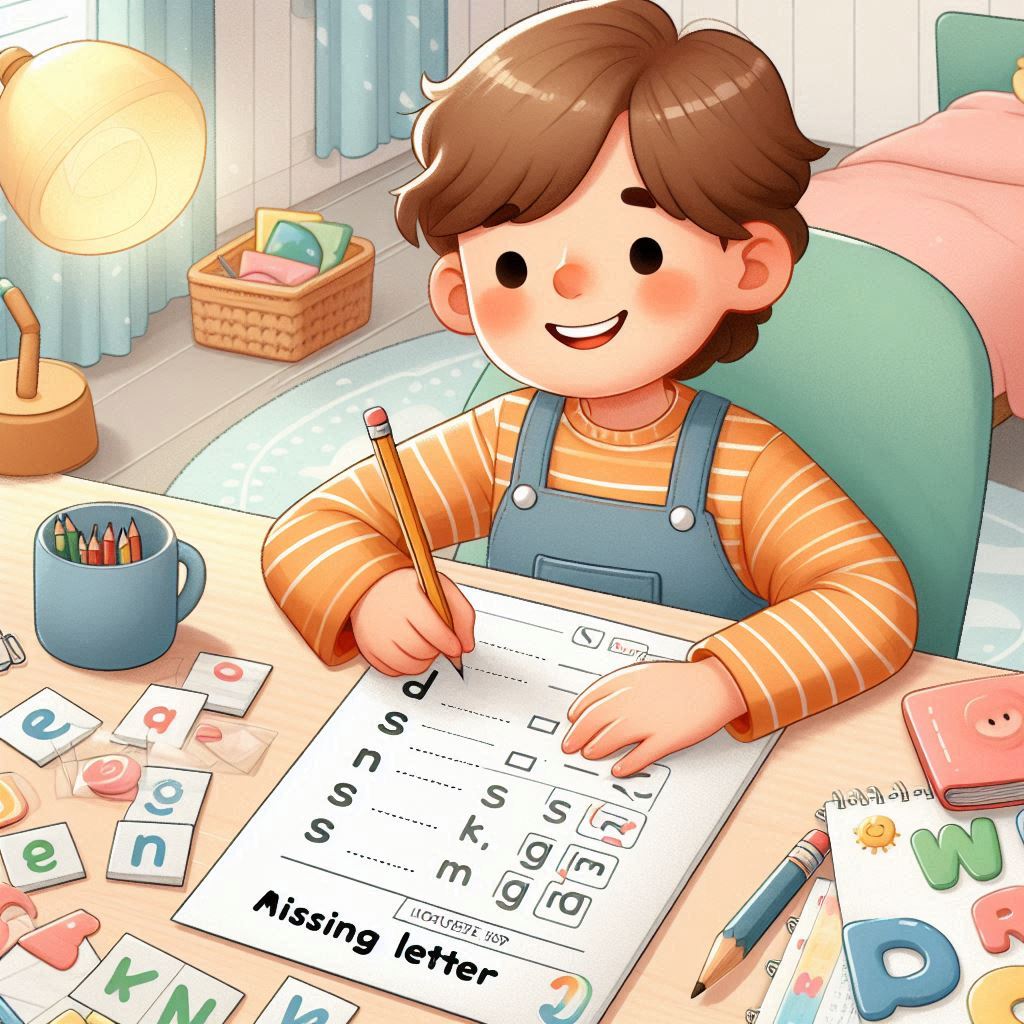Missing Letters Worksheet

Introduction to Missing Letters Activities
Learning to recognize missing letters in words is an essential step in early literacy. These activities challenge children to observe, think critically, and recall letter patterns. A Missing Letters Worksheet helps kids focus on spelling, phonics, and vocabulary in a fun and engaging way. By identifying the correct letters to complete words, children strengthen their reading and writing foundations while developing confidence in their spelling abilities.
What is a Missing Letters Worksheet?
A Missing Letters Worksheet is a language-based activity where children complete words by filling in the missing letter or letters. For example, a worksheet might show "c_t" with a picture of a cat, prompting the child to fill in the missing letter "a". These worksheets use visuals and partial words to help children make connections between letters, sounds, and word structures.
Benefits of the Missing Letters Worksheet
This activity offers a wide range of benefits for early learners:
- Enhances Spelling Skills: Children learn how to spell simple words correctly by figuring out the missing letters.
- Boosts Phonics Understanding: Focusing on specific missing letters improves sound-letter relationships.
- Improves Word Recognition: Kids start recognizing common word patterns and syllables more quickly.
- Develops Critical Thinking: Choosing the correct letter from several options helps develop decision-making and problem-solving skills.
- Encourages Active Learning: Children interact with words directly, reinforcing learning through practice.
How to Use the Missing Letters Worksheet
Follow these steps to use the worksheet effectively in both home and classroom settings:
Step 1: Print or Open the Worksheet
Use a worksheet that includes pictures and incomplete words (e.g., "d_g" for "dog"). Ensure it’s colorful and appealing to keep kids interested.
Step 2: Introduce the Concept
Start by showing an example. Say, "Here is a picture of a dog. The word is missing a letter. Can you guess what letter goes in the blank to make 'dog'?" Let children guess and sound it out.
Step 3: Let the Child Complete the Words
Give them time to complete the worksheet. They can write in the missing letters or circle the correct option from a list. Reinforce their answers by asking them to read the completed word aloud.
Step 4: Go Over the Results
Review each answer together. Praise correct responses and gently correct mistakes by sounding out the word and helping the child identify the correct letter.
Step 5: Extend the Activity
Encourage children to come up with other words using the same missing letter sound or challenge them with more complex words once they master basic ones.
Creative Variations of the Worksheet
- Picture Clues: Use pictures next to each word to give children visual hints about the missing letters.
- Multiple Choice Blanks: Provide two or three letter options to make the activity easier for beginners.
- Interactive Boards: Use letter magnets or flashcards to let children physically place the missing letter.
- Timed Challenges: Set a timer to add excitement and improve focus and speed.
Examples of Missing Letter Words
- C_t → Cat
- D_g → Dog
- H_t → Hat
- P_n → Pen
- F_sh → Fish
- B_ll → Ball
Why Missing Letters Worksheets Are Effective
This worksheet bridges the gap between recognizing letters and forming complete words. It allows children to think actively about letter placement, reinforcing spelling rules and phonics skills. As they progress, they also develop stronger memory and attention to detail—two skills that benefit them in all areas of learning.
Conclusion
The Missing Letters Worksheet is a valuable tool in early language development. By completing words with the correct letters, children enhance their reading, spelling, and phonics abilities in a simple yet fun way. Whether you're a teacher or a parent, this activity is perfect for helping young learners build a solid foundation in literacy while enjoying the learning process.